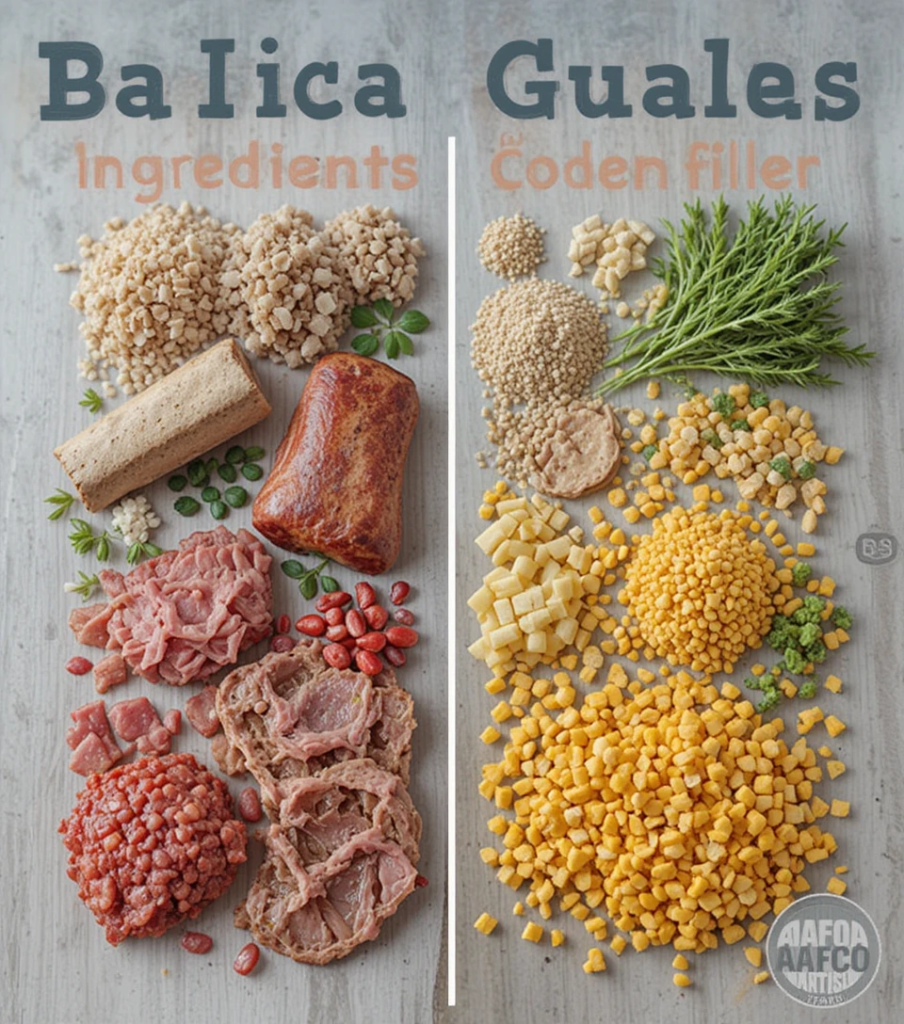Choosing the best dog food for your beloved pup may seem simple, but the truth hiding behind shiny packaging and clever marketing might shock you. While many dog food brands claim to be “the best,” not all are created equal. In this guide, we’ll pull back the curtain and reveal what truly makes a dog food worthy of your pet’s bowl.
🦴 What Makes a Dog Food “The Best”?

When it comes to choosing dog food, the term “best” can be misleading. True quality goes beyond brand recognition — it’s about nutritional balance, ingredient integrity, and digestive compatibility.
Key Standards:
- AAFCO Compliance: Ensures the food meets basic nutritional standards.
- Balanced Formulas: Look for the right mix of protein, fat, fiber, and essential vitamins.
- Whole Ingredients: Real meat, vegetables, and whole grains signal higher quality.
😱 The Shocking Truth About Popular Brands
Many top-selling dog food brands spend more on marketing than on nutrition. Some include:
- Meat by-products
- Corn fillers
- Artificial colors and preservatives
💡 Surprise: Even premium-priced kibble may contain low-quality or misleading ingredients. Always read the label — don’t trust the front of the bag!
🥩 Dry, Wet, Raw, or Fresh: What’s Right for Your Dog?
Each type of dog food offers benefits — and drawbacks. Here’s a quick comparison:
| Type | Pros | Cons |
|---|---|---|
| Dry (Kibble) | Affordable, long shelf life, convenient | Often highly processed, less moisture |
| Wet (Canned) | Palatable, hydrating, soft texture | Shorter shelf life, more expensive |
| Raw | Mimics ancestral diets, high protein | Risk of bacteria, nutrient imbalance |
| Fresh/Homemade | Whole ingredients, minimal processing | Time-consuming, hard to balance nutrients |
👉 The best choice depends on your dog’s needs — not just trends.
✅ Top Ingredients to Look For (and Avoid)

Look For:
- Named animal proteins (e.g., chicken, beef, salmon)
- Whole grains like brown rice or oats
- Natural preservatives (e.g., tocopherols, rosemary extract)
Avoid:
- Animal by-products
- Corn, wheat, soy as fillers
- Artificial flavors, colors, and preservatives
🛑 Beware of “buzzwords” like gourmet, natural, or premium — they aren’t regulated terms.
🩺 Vet-Approved Dog Food: What Experts Recommend
Veterinarians often recommend brands backed by clinical research and controlled manufacturing, such as:
- Hill’s Science Diet
- Royal Canin
- Purina Pro Plan
These may not be trendy, but they’re nutritionally consistent and tailored to specific needs.
💬 Pro Tip: Always consult your vet before switching your dog’s food — especially for dogs with allergies or chronic conditions.
🐕 Tailoring Dog Food to Your Dog’s Needs
Every dog is unique. The right food depends on:
- Age (puppy, adult, senior)
- Breed size (small, medium, large)
- Health conditions (e.g., obesity, allergies)
- Activity level (active vs couch potatoes)
For example:
- Large breed puppies need food to support joint health.
- Senior dogs benefit from low-fat, joint-friendly diets.
🥗 Homemade and Fresh Dog Food: Is It Better?
Fresh or homemade dog food is rising in popularity — but it’s not without risks.
Pros:
- Whole, real ingredients
- No hidden chemicals
- Customizable for allergies or sensitivities
Cons:
- Time-consuming prep
- Risk of nutritional imbalance
- Can be costly long-term
If going this route, work with a canine nutritionist to ensure your dog’s diet is balanced.
🏷️ How to Read Dog Food Labels Like a Pro
Don’t get fooled by flashy claims. Learn to spot:
- Top 5 ingredients (they make up the bulk of the food)
- Guaranteed analysis (protein/fat/fiber breakdown)
- AAFCO statement (is it complete & balanced?)
🧐 If you see “chicken flavor” instead of “chicken,” there’s likely very little real meat.
🐾 Conclusion: What’s Really Best for Your Dog?
There’s no universal “best” — only what’s best for your dog’s needs. Focus on:
- Transparent ingredient lists
- Nutritional value over brand hype
- Trusted, vet-recommended choices
The shocking truth? What’s marketed as “premium” may not be the healthiest. Be informed, read labels, and when in doubt — ask your vet.
❓ 10 FAQs: Which Dog Food Is Best?
1. What is the healthiest type of dog food?
Fresh or high-quality kibble with named proteins and no fillers is often healthiest, depending on your dog’s needs.
2. How do I know if a dog food brand is safe?
Check for AAFCO certification, transparent labeling, and recall history.
3. Is grain-free dog food better for all dogs?
Not always. Some dogs need grains for fiber and energy. Grain-free isn’t automatically better and may pose risks.
4. What ingredients should I avoid in dog food?
Avoid meat by-products, corn, soy, artificial dyes, and chemical preservatives.
5. Can I mix dry and wet dog food?
Yes! Mixing can improve palatability and hydration. Just ensure the total nutrition remains balanced.
6. Do dogs need different food by age or breed?
Absolutely. Puppies, adults, and seniors have different needs. So do large and small breeds.
7. Are expensive dog food brands always better?
No. Some affordable brands like Purina Pro Plan are vet-recommended, while pricier ones may lack oversight.
8. What do vets recommend for sensitive stomachs?
Easily digestible formulas with limited ingredients or hydrolyzed proteins are often recommended.
9. Is fresh or homemade dog food actually healthier?
It can be — but only if it’s nutritionally complete. Work with a vet or nutritionist.
10. How often should I switch my dog’s food?
Only when necessary (e.g., life stage changes or medical issues). Always transition gradually.

